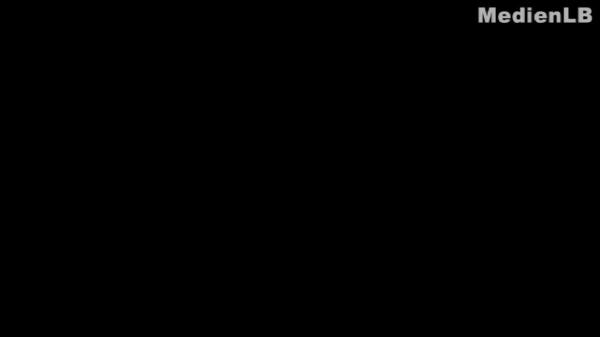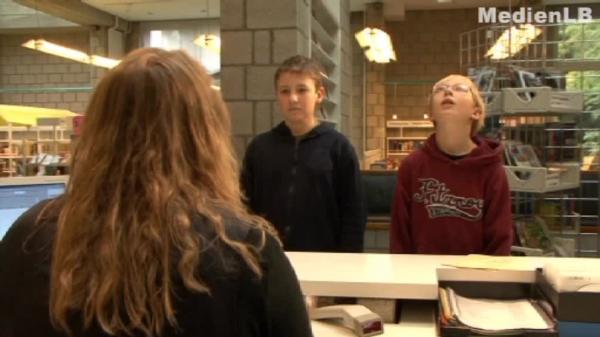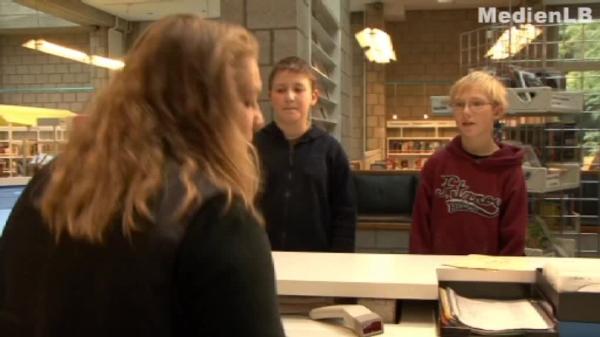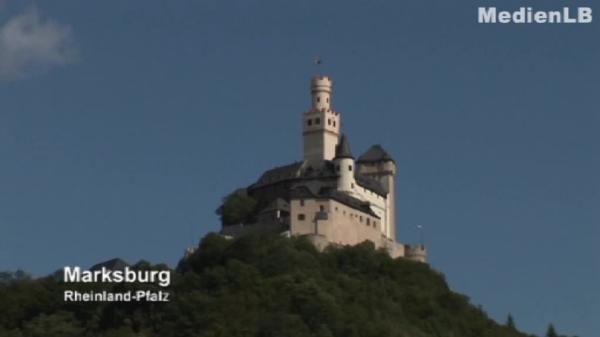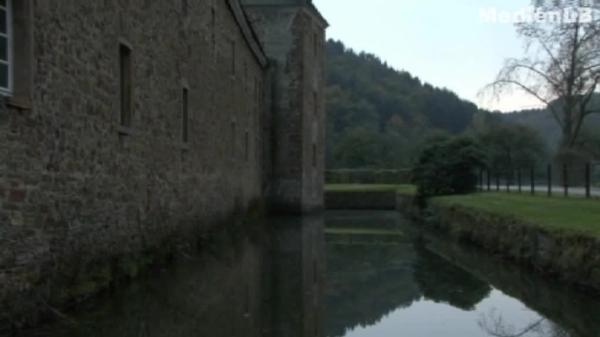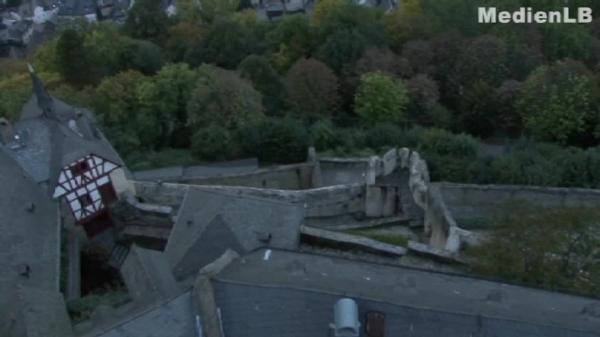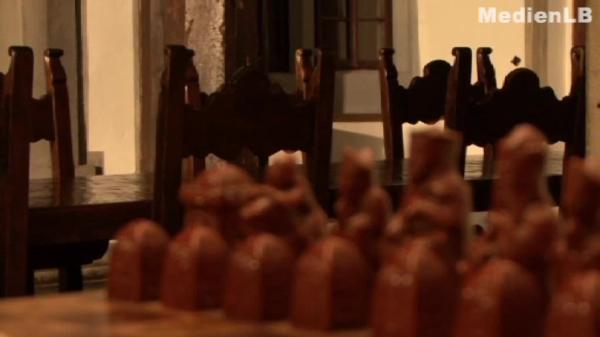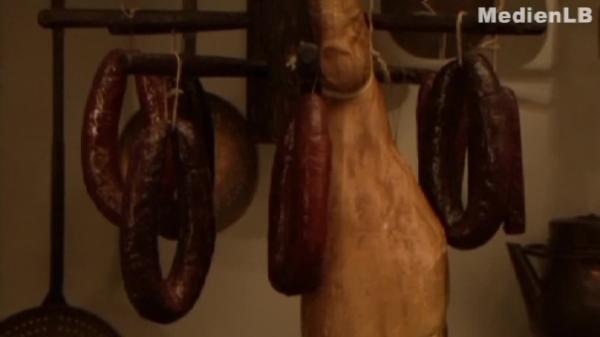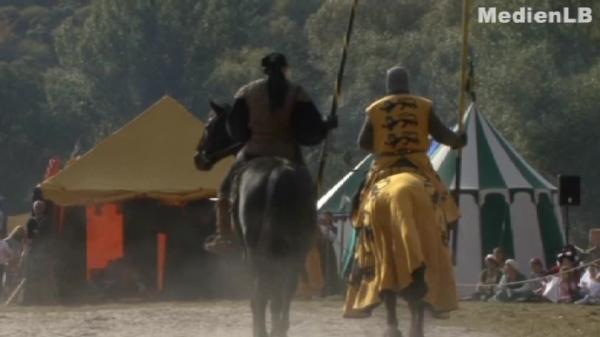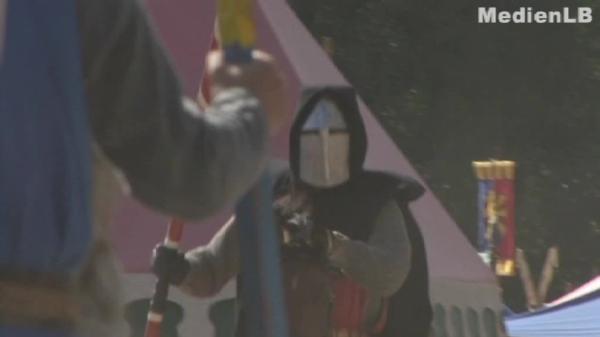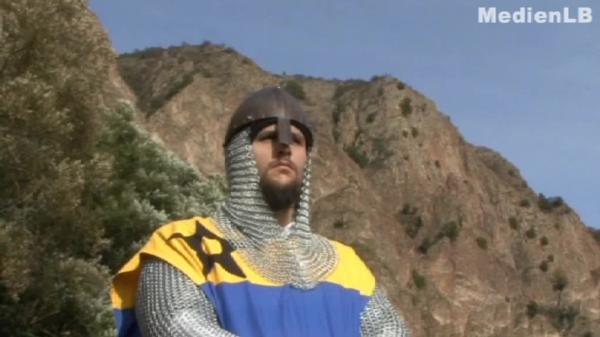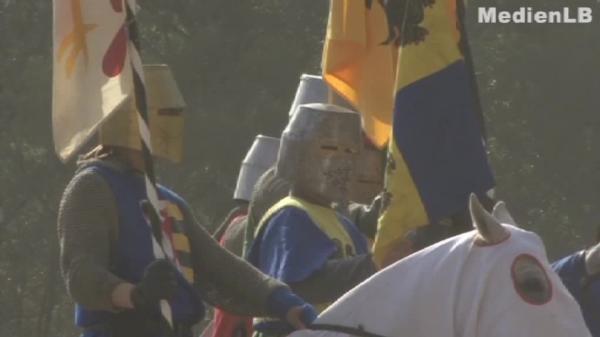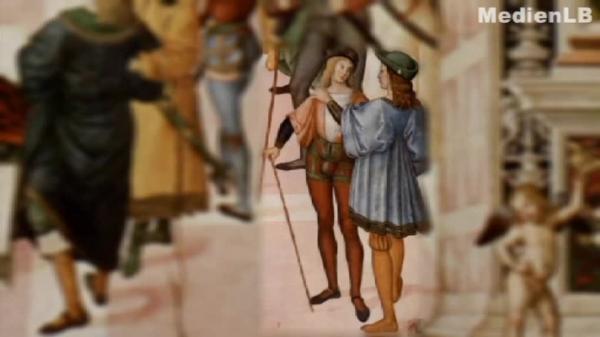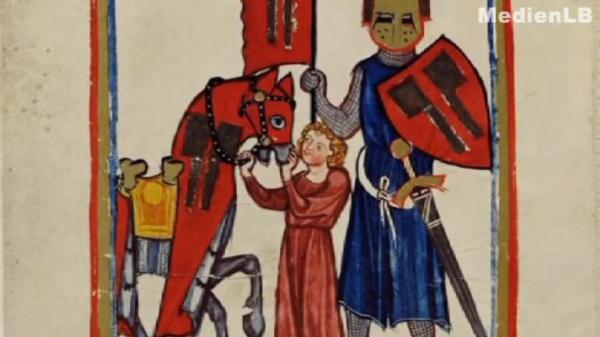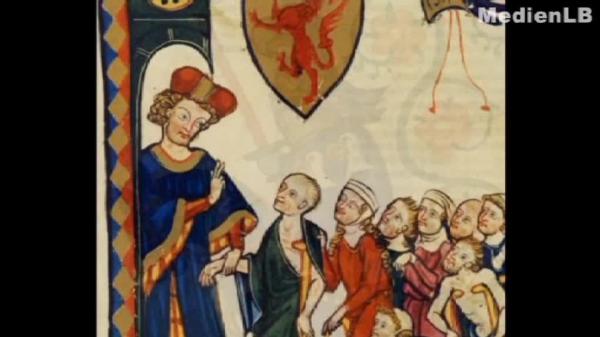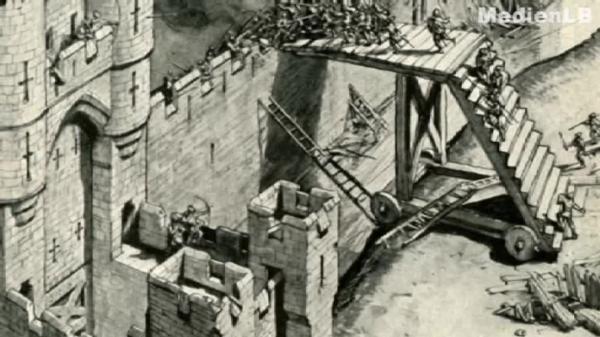Ritter
Das Leben im Mittelalter

Knights

1. The Middle Ages – the time of knights Knights lived at a time that we call the middle ages. This time is long gone. From the 11th century onwards, i. e. roughly 1,000 years ago there were knights. Emperors and kings were the highest rulers and knights were mounted combatants of noble descent. The knight had pledged loyalty to his king and was prepared to go to war for him. In return he was given land which comprised forests and fields. The knight would loan this land to peasants. They had to work for the knight and were totally dependent of him – this was called serfdom. As a rule the knight received a part of the yield. In return he offered the peasants protection at his castle during war. 2. Types of Castles Castles are imposing buildings which were mostly built on banks from which the surrounding area could easily be overseen and which were hard to conquer. This type of castle is called a motte castle. Moated castles were those castles that were protected by deep and wide moats. These moats ran around the entire castle. To enter one of these castles enemies had to overcome first the moat and then the high walls. The water castle is situated amidst a lake or a river. The water offered the castle protection, since the assailants needed boats to conquer the castle. 3. Life at the Castle The knights lived at the castle together with their families, servants and retinues. The castle was the fortified home of a nobleman. The thick walls of the castle had small apertures – the crenels. From these archers would shoot their arrows, if the castle got attacked by enemies. Inside the castle there was little room. In the inner ward there was usually a hustle and bustle. Craftspeople and servants were always busy. Pigs, chickens and dogs were running free, their refuse was everywhere. The castle would have a small garden. There plants and herbs would be grown. The well was very important. In hill castles it would often reach 70 to 80 meters into the rock. From this the knight’s servants would draw water for drinking, bathing and cooking. The numerous weapons were kept in the armoury. Not all knights lived in castles, since a lot of money was needed to build a castle. And not all the knights had that. Thus common knights would live in villages that belonged to their fiefdom. The palace was the residential building of the knight and his family at the castle. The most important room at the castle was the great hall. It was also located in the palace. This was where the knight would tend to official functions and receive visitors. The rooms and hallways in the castle were dark, light would only come from torches or oil lamps. The living quarters were draughty and cold. Glas was not yet used to seal windows. In winter it would be freezing. The bower would often be the only heated room in a castle and would serve as a living room and bedroom. A warming fire would burn in a fireplace. There were no wardrobes. By the bed there would be one or more large chests. In those the knight would keep his clothing and linens. To answer the call of nature the knight would use the type of toilet typical of that time. The flush toilet had not been invented yet. Therefore the toilets were built on the outer walls of the living quarters or towers in the shape of jutties. From there the waste would simply drop to the ground at the foot of the castle. Also every castle had a huge tower – called the donjon. This served as a status symbol as well as a watchtower. Foodstuffs were kept there, and the knights retreated to the donjon when enemies had conquered the castle walls. The dungeon was also located in the donjon. This was a deep, cold and dark hole into which the knight would throw captives. When the knights weren’t engaged in battles they liked to go hunting. After the hunt the meat would be cooked over an open fire on a skewer or in pots in the large kitchen. However, meat was rather rare. Usually the meals would consist of soup, curd cheese, porridge and bread. To drink there would usually be wine or beer. The poor would drink water. A document establishes rules for acceptable behaviour during meals: e. g. Don’t drink with your mouth full! Don’t eat and speak at the same time! By the way: Food was eaten with fingers. Soups and sauces with a wooden spoon. 4. Jousting tournaments During times of peace the knights still wanted to demonstrate their courage and dexterity. They did that in grand and splendid martial competitions, the so-called jousts. Knights would arrive from everywhere to compete against each other. Following set rules the opponents would fight each other in one-on-one battles. The knights would charge at each other at full gallop and try to unhorse the other. Although the knights would fight with blunt lances there were still casualties and deaths sometimes. The loser had pay money, or he would lose his horse and armour to the winner. The victor would receive a prize from the lady of the castle – a floral wreath. To receive such a tribute from a woman was the highest praise for a knight. A jousting tournament consisted not only of the jousting but also always a feast. 5. Armour/Coat of Arms/Weapons When the knights went into battle they would protect their bodies with chain mails. I covered everything from head to the knees. Such a chain mail was made of many metal rings and weighed between 12 and 15 kilos. His head the knight would protect with an iron helmet with nose shield. Later the knights reinforced their armours as the chain mails didn’t offer enough protection in battle. Various plate armours protected the legs, chest, back, arms and hands. The head was protected by a closed helmet whose visor could be opened. Such an armour could weigh over 30 kilos, thus making it almost half as heavy as the knight himself. Therefore he needed help to mount his horse. During combat it could be difficult for the knight to tell friend from foe. A personal emblem – a coat of arms – on the bucklers, tunic and the saddlecloth helped orientation when the knight had his visor closed during combat. Thus the knight would be easily recognisable and well-protected in battle. The knight only fought with two types of weapon: A thrust weapon and a strike weapon. He would attack with the lance. The lance was a long wooden javelin with a steel tip. The most important weapon of a knight was the sword. The sword was forged from iron. It had a two-edged blade, was usually over a metre long and rather heavy at 2-3 kilos. After a fight the swords often had to be straightened again, because they were bent and dented. A good sword was very expensive. It cost as much as 12 cows or 214 pigs. In the middle ages, swords were also considered symbols of power and authority. The knight had another strike weapon to use: the heavy battle axe. A battle of knights would start with a joint attack. In full gallop the knights would charge at their opponents and fought courageously in one-on-one battles. 6. From Page to Knight The sons of knights were prepared for their lives as knights from an early age. At the age of seven already the son of a knight went to live at another knight’s castle. There they learnt “good behaviour” and had to help around the house. They were called apprentice squires or pages. At the age of 14 the page became a squire. He had to participate in the hunt and go into battle, he assisted at tournaments and learnt about weaponry, fencing, horseriding, archery and tilting with a lance. Swimming was also one of the things he was taught. Seven long years later, at the age of 21, the training was finished. The squire was knighted. Thereby he would take an oath, in which he obliged himself to always behave in a knightly fashion. Gallantry, courage, loyalty and generosity were the highest of knightly ideals. His sword should serve the needy and the poor. He was given a sword, helmet and spurs as well as a buckler with his coat of arms. Of this he was proud. Now he himself could take part in tournaments. The daughters of knights learnt to spin, weave and sew. They were also taught reading, writing and music. At the age of 14 most of them were married. 7. The Siege Often enemies tried to conquer castles by siege. A siege would last several months. The assailants tried to climb over the castle walls or to dig a tunnel underneath them. This they would then set fire to, so that the walls would collapse. The castle’s channels of supply were blocked to starve the inhabitants and thus force them to surrender. Siege towers were used in direct attack. They were pushed very close to the castle’s walls so that it was possible to fire at the castle’s inhabitants. Alternatively a battering ram could be used. This was a huge tree trunk with a large tip. It was rammed into the draw bridge, the gate or the wall. Also used was a catapult. With this rocks were hurled over the castle walls. Crossbows, bow and arrows as well as ladders were also part of the equipment. The curtain wall was the main defensive fortification of the castle. On top of it there was a battlement with merlons, also called parapet. The merlons offered cover to the defenders. From up there they threw boulders. Or they would pour boiling water, hot oil or hot sand onto the assailants. 8. The End of the Age of Knights Roughly 500 years ago knights lost significance, since by then they were already powerless in battle against the cannons which had already been invented. Their medieval arts of defence had to yield to firearms. Many castles lay in ruins and decayed.

